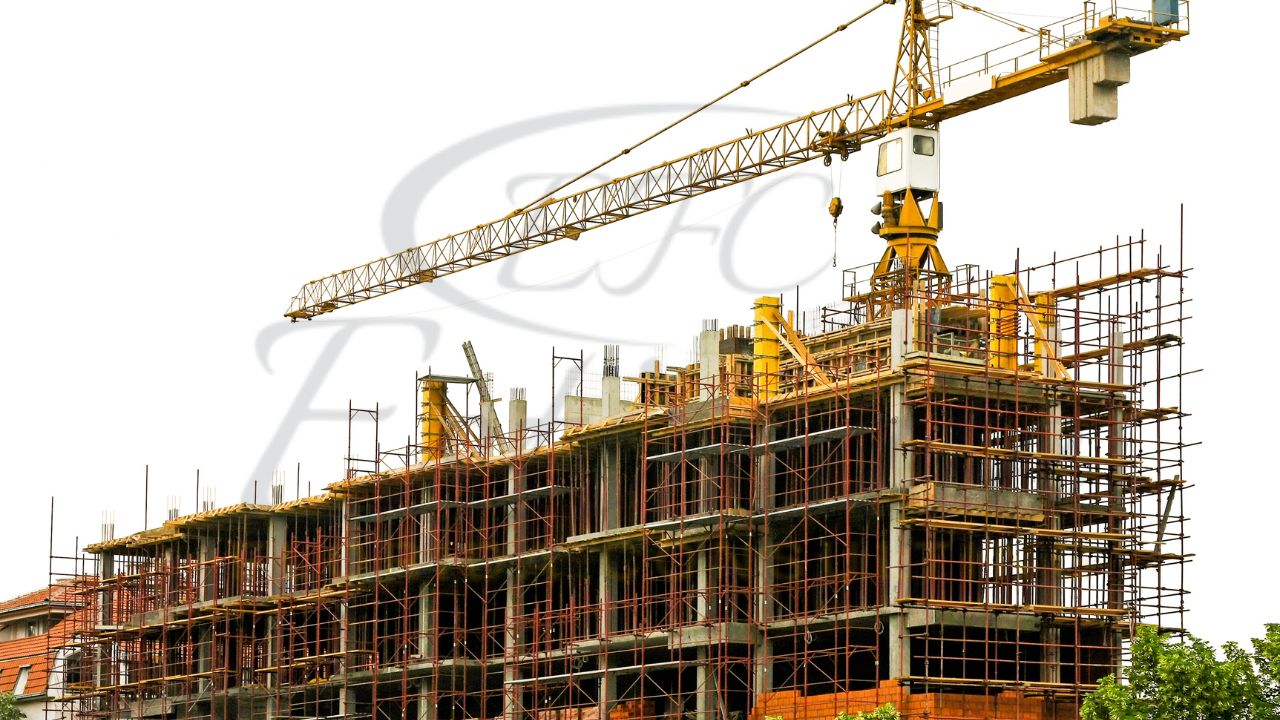The Hidden Costs of Not Managing Risk in Construction Projects
Every construction project starts with a vision. A blueprint. A schedule. A spending plan. But too often, an essential element is missing: a thorough risk management plan. Risk planning is often overlooked or included in insurance packages, but schedules and materials are closely monitored. The outcome? Delays, overspending, lawsuits, and even business failures.
Construction is dangerous by nature. The industry faces a complex web of uncertainties, ranging from labor shortages and regulatory obstacles to weather disruptions and fluctuating material costs. Failure to foresee and reduce these risks has practical repercussions that affect not only a single project but also the long run.

This is where business risk management consulting plays an essential role. Business risk management specialists assist construction leaders in transitioning from reactive to proactive problem-solving by spotting possible vulnerabilities early and developing well-thought-out responses. Let’s review the consequences of ignoring risk and how professional assistance can mean the difference between profit and loss.
The Real Cost of Poor Risk Planning
Every construction professional has faced a project that went sideways. Often, the issues start small but snowball quickly. A delayed permit here. A missed delivery there. After that, clients get irritated, labor costs increase, and the schedule slips. These difficulties turn into crises in the absence of a sound plan.
Here are just a few of the consequences that stem from poor risk planning:
1. Budget Overruns
Unexpected site conditions, commodity price fluctuations, and unforeseen regulatory changes are all common contributors to cost overruns. Without contingency buffers or predictive financial modeling, projects spiral over budget, eroding profit margins or forcing renegotiations that strain client relationships.
2. Timeline Delays
Risk factors like weather events, labor disputes, or logistical breakdowns can halt progress. When there is no mitigation plan, delays extend the timeline, add cost, and disrupt scheduling across multiple projects. Time is money in construction, and delays can be fatal to project success.
3. Legal Disputes
When responsibilities are not clearly defined or risks are not allocated appropriately in contracts, conflicts arise. These may result in lawsuits, arbitration, or contract terminations that drain both time and money. Preventable disputes are often rooted in poor planning and a lack of foresight into operational risks.
4. Damage to Reputation
Even a single failed project can tarnish a company’s reputation in the industry. In construction, referrals and past performance often determine future work. Projects that fail due to unmanaged risk can compromise trust and lead to lost bids.
5. Operational and Financial Instability
The absence of a clear risk management structure increases exposure to cash flow interruptions, insurance gaps, or compliance penalties. Over time, these issues add up, weakening the financial foundation of the business.
Why Construction Projects Are Uniquely Vulnerable?
There is a lot of interdependence in construction projects. Under pressure to meet deadlines and adapt to changing circumstances, architects, engineers, contractors, subcontractors, and suppliers must collaborate effectively. The industry is particularly vulnerable to risk because of the intricacy of these relationships as well as outside factors like weather, inflation, and regulatory changes.
In contrast to other sectors, risk in the construction industry encompasses more than just uncertainty. It has to do with volatility. A minor issue in one area can cause a chain reaction of problems that affect the entire project. Early detection and scenario planning are therefore essential.
Many of these risks are foreseeable, but only if the company is equipped to analyze them properly. That’s where business risk management consulting becomes more than just a service—it becomes a strategic asset.
The Value of a Risk Management Strategy
When risk is managed properly, the benefits are not just about avoiding problems. They extend into smarter operations, more confident decision-making, and stronger competitive positioning.
A tailored risk management strategy helps construction firms:
- Identify vulnerabilities before they become liabilities
- Build contingency plans for likely disruptions
- Develop realistic timelines and budgets with buffer capacity
- Allocate risk fairly through contract design and partner vetting
- Monitor changes in regulations, supply chains, or market conditions
What separates reactive firms from resilient ones is not luck. It is planning. Having a well-defined risk management structure improves performance across every dimension of the business.
Leveraging Actuarial Expertise in Construction Risk
While traditionally associated with insurance, actuarial science has become increasingly valuable in other high-risk sectors, including construction. Actuarial models provide data-driven insights into uncertainty, helping firms understand the probability and financial impact of various risk scenarios.
From forecasting materials cost volatility to quantifying workforce availability trends, actuarial tools support better risk management by grounding it in real-world data. These insights help construction leaders make more informed choices about where to build, how to budget, and what risks to prioritize.

For firms seeking a structured and data-backed approach, incorporating actuarial analysis for risk-related decision-making is a powerful step forward. This kind of analysis moves beyond intuition or generic industry benchmarks. It delivers targeted, project-specific projections that strengthen every layer of planning and execution.
Closing the Gap with Expert Support
Many construction companies have risk policies, but far fewer have robust, proactive strategies backed by data and expert analysis. The difference between the two is often the difference between surviving a disruption and succumbing to it.
This is why partnering with professionals in business risk management consulting can be transformative. These consultants specialize in identifying industry-specific exposures, designing practical mitigation plans, and integrating risk strategy into daily operations. They bring cross-sector experience and tools that help construction businesses adapt to both short-term disruptions and long-term uncertainty.
Combining this with insights from actuarial analysis for risk-related decision-making ensures that risk management is not only responsive but also predictive. This blend of strategy and data empowers construction firms to make confident decisions, improve outcomes, and protect both reputation and revenue.
Construction projects are high-stakes endeavors. They involve massive investments, tight timelines, and a wide array of risk factors that can derail success. While some uncertainty is unavoidable, unmanaged risk is not. The consequences of ignoring risk planning—financial loss, reputational damage, and operational instability—are simply too great to overlook.
A forward-thinking risk management strategy, supported by expert consulting and actuarial insights, is no longer optional for construction firms that want to thrive in today’s unpredictable environment. It is a critical component of sustainable growth and responsible leadership.
Risk will always be a part of construction. But with the right strategy, it can be managed, mitigated, and even transformed into opportunity.

